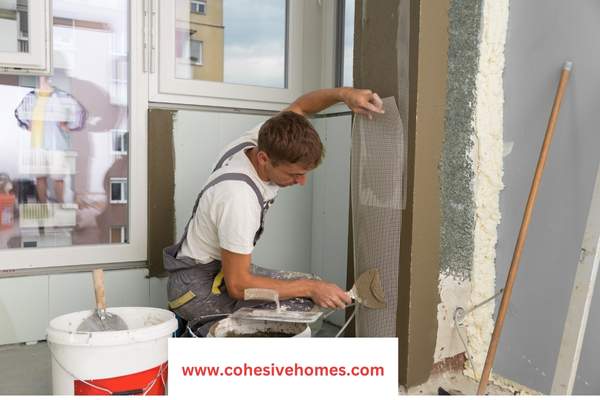
Welcome to My blog post on “How To Insulate Lath And Plaster Walls”.
If you live in an older home, chances are your walls are made of lath and plaster, which can be more challenging to insulate than modern drywall.
However, insulating these walls is crucial to keep your home energy-efficient and comfortable, especially during extreme weather conditions.
In this post, we will guide you through the process of insulating lath and plaster walls, including the materials you’ll need and the steps to take to ensure that your home is adequately insulated.
So, if you’re ready to improve your home’s energy efficiency and keep your family comfortable, read on!
Insulating lath and plaster walls improves energy efficiency, reduces noise, and increases comfort. Proper measurement, the right insulation material, and safety precautions are important for success.
Introduction to Lath and Plaster Walls

Builders commonly constructed homes before the 1950s using lath and plaster walls, which involve nailing thin strips of wood (lath) to the studs and covering them with a layer of plaster.
This type of wall construction is known for its durability and versatility, but can also be a source of heat loss.
Lath and plaster walls are not as airtight as modern wall constructions and can result in higher energy bills.
To improve the energy efficiency of your home, insulating lath and plaster walls is an effective solution.
This type of insulation helps to reduce heat loss, improve comfort, and reduce energy costs.
Importance of Insulating Lath and Plaster Walls
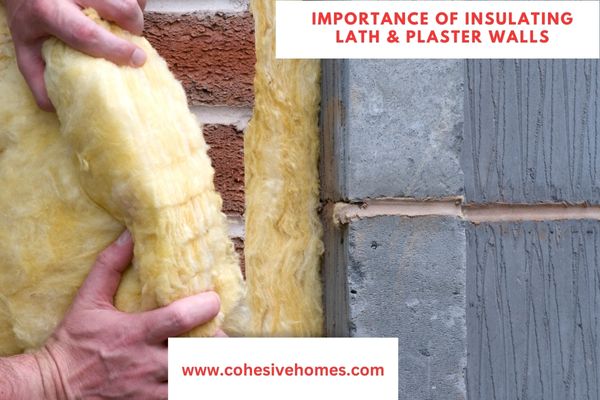
Insulating lath and plaster walls is important for a number of reasons.
Firstly, it helps to reduce heat loss and improve energy efficiency.
In older homes with lath and plaster walls, heat can escape through gaps and cracks in the walls, leading to higher energy bills.
By insulating walls reduces heat loss, keeping your home warmer in colder months.
Secondly, insulating lath and plaster walls can improve indoor comfort.
A well-insulated home will have a more consistent temperature, reducing the need for frequent adjustments to your heating system.
This can result in a more comfortable living environment and can help reduce the stress on your heating system.
Finally, insulating lath and plaster walls can add value to your home.
Energy-efficient homes appeal to buyers by reducing energy costs and providing a comfortable living environment.
By insulating your lath and plaster walls, you can make your home more attractive to potential buyers and increase its resale value.
Types of Insulation for Lath and Plaster Walls
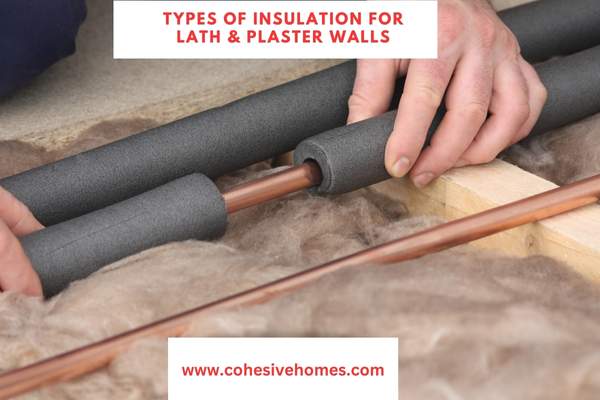
There are several types of insulation that can be used to insulate lath and plaster walls, including:
- Batts or rolls: This is a common type of insulation that comes in pre-cut lengths and can be easily installed between the laths.
- Blown-in insulation: This type of insulation is blown into the walls using a specialized machine, filling any gaps and cracks in the walls.
- Spray foam insulation: this type of insulation is sprayed into the walls, expanding to fill any gaps or cracks in the walls.
- Rigid foam board insulation: This type of insulation comes in rigid panels that can be cut to size and attached directly to the laths.
Each type of insulation has its own pros and cons, and the best option for your home will depend on a number of factors, including the size and type of your home, your budget, and the specific needs of your home.
We will explore the pros and cons of each type of insulation in more detail, helping you make an informed decision about the best option for your home.
Pros and Cons of Different Insulation Methods for Lath and Plaster Walls

Batts or rolls

Batts or rolls of fiberglass or mineral wool insulation are easy to install and are available in a range of thicknesses and R-values.
Pros include low cost and easy installation.
Cons include the need for additional fire-resistant materials in some cases, and the risk of air leaks if not installed properly.
Blown-in insulation
Blown-in insulation is a good option for hard-to-reach spaces, such as attics or wall cavities.
Installing spray foam insulation is advantageous because it allows for installation in difficult spaces and provides a good option for adding insulation to existing homes.
Cons include the need for specialized equipment and the risk of it settling over time, reducing its effectiveness.

Sprayed foam insulation
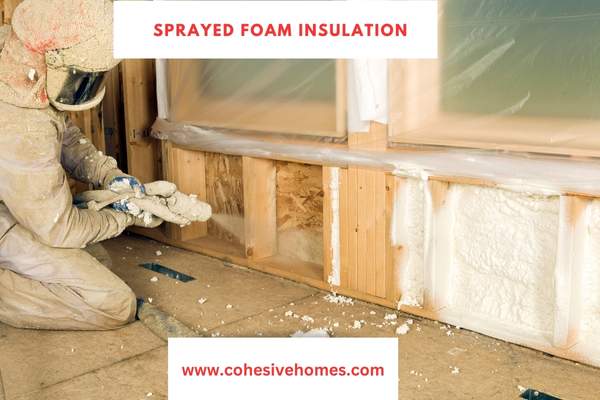
Sprayed-on foam insulation is a quick and effective way to add insulation to walls, attics, and other spaces.
Pros include its ability to expand and fill gaps, creating an airtight seal, and its high R-value per inch.
Cons include the need for specialized equipment and installation and the risk of over-compression if applied too thickly.
Rigid foam boards
You can install rigid foam boards in wall cavities or on the exterior of the building, providing flexibility in how and where you add insulation to your home.
Pros include their high R-value per inch and their ability to provide a thermal break, reducing heat transfer.
Cons include their weight, which can put stress on the structure, and the risk of air leaks if not installed correctly.
When choosing the right insulation method for your lath and plaster walls, consider the pros and cons of each option and choose the one that best meets your needs.
Consulting a professional is also advisable to ensure correct installation of the insulation and to receive expert guidance.

Choosing the Right Insulation Material for Lath and Plaster Walls

When choosing insulation material for lath and plaster walls, consider the following factors:
R-value
The R-value of an insulation material measures its resistance to heat flow, so choose a material with a high R-value for optimal energy efficiency.
Type of insulation
The type of insulation you choose will depend on your specific needs, as well as the structure of your walls and the space available.
Options include batts or rolls, blown-in insulation, sprayed foam insulation, and rigid foam boards.
Availability
Some insulation materials may be more readily available in your area than others, so consider the local availability of the material you’re interested in.
Cost
The cost of insulation can vary widely, so consider your budget when choosing a material.
Environmental impact
Some insulation materials, such as fiberglass or mineral wool, are derived from non-renewable resources, while others, such as cellulose or spray foam, are more eco-friendly.
Consider your impact on the environment when choosing an insulation material.
Fire resistance
Some insulation materials, such as fiberglass or mineral wool, are fire-resistant, while others, such as cellulose, are not.
Think about the material’s fire resistance, especially if your home is in a high-risk area.
By considering these factors and weighing the pros and cons of each option, you can choose the right insulation material for your lath and plaster walls, helping to reduce heat loss and improve energy efficiency in your home.
Step-by-Step Guide for Insulating Lath and Plaster Walls
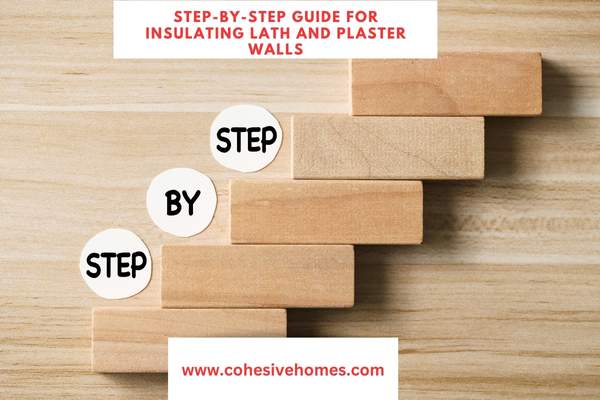
- Remove wall coverings: Remove any wall coverings, such as wallpaper or paneling, to access the laths and plaster.
- Repair any damage: Check the walls for any cracks or holes and repair them.
- Clean the walls: Dust and debris can reduce the effectiveness of the insulation, so it’s important to clean the walls before insulating.
- Measure the space between the laths: Measure the space between the laths to determine the correct size of insulation to use.
- Cut the insulation to size: Cut the insulation material to size, using a measuring tape, utility knife, and saw as required.
- Install the insulation: Install the insulation material between the laths, using a drill to secure it in place as required.
- Seal any gaps: Seal any gaps around windows, doors, and electrical outlets to prevent air leaks.
- Replace wall coverings: Replace any wall coverings that were removed during the insulation process.
These steps will help you successfully insulate your lath and plaster walls, lowering heat loss and enhancing your home’s energy efficiency.
Depending on the type of insulation you select, the precise stages and materials needed will change; however, this guide offers a general overview of the process.
Tools Required for Insulating Lath and Plaster Walls

| TOOLS | PURPOSE |
| Tape measure | Measure the depth of the wall cavity and determine the amount of insulation required. |
| Utility knife | Cut insulation to size and make precise cuts. |
| Screwdriver or drill | Attach insulation backer board to the studs, if needed. |
| Stud finder | Locate the studs and determine the location of the wall cavity. |
| Dust mask | Protect against dust and insulation fibers. |
| Safety glasses | Protect your eyes from dust and debris. |
| Gloves | Protect your hands while handling insulation. |
| Insulation blower | Blow insulation into the wall cavity, if using loose-fill insulation. |
| Spray foam insulation kit | Apply spray foam insulation, if using this method. |
| Staple gun | Secure insulation in place, if needed. |
Note: Various tools may be required for installation, depending on the type of insulation you choose and the procedure.
Products available on Amazon that might be helpful for insulating lath and plaster walls
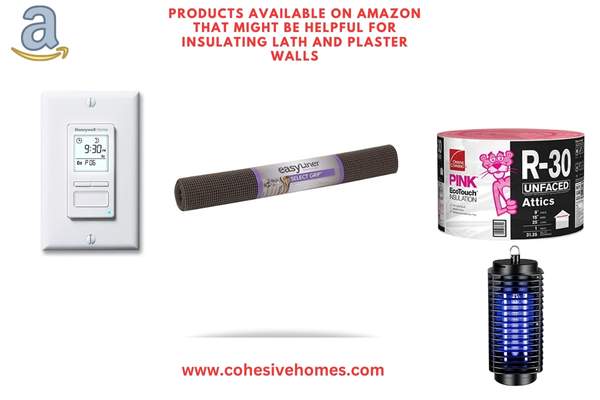
Honeywell Home RPLS740B1000/U 7-Day Programmable Light Switch Timer
This programmable switch timer can be used to control lights and fans in your home, helping to reduce energy waste and increase energy efficiency.
Duck Brand Select Grip EasyLiner Adhesive Shelf Liner, 20-Inch x 6-Feet, White
This adhesive shelf liner can be used to insulate lath and plaster walls as well as protect the walls from moisture.
Owens Corning 703 Sound Absorbing Fiberglass Batt Insulation
This fiberglass batt insulation is designed to reduce noise transmission and improve energy efficiency in your home.
EcoTouch PINK FIBERGLAS Insulation with PureFiber Technology
This fiberglass insulation is designed to provide exceptional insulation performance while being environmentally responsible.
GREAT STUFF Gaps and Cracks Insulating Foam Sealant
This insulating foam sealant can be used to fill gaps and cracks in your lath and plaster walls, helping to reduce heat loss and improve energy efficiency.
Safety Considerations When Insulating Lath and Plaster Walls

Insulating your lath and plaster walls can improve the energy efficiency of your home, but it’s important to take safety precautions to protect yourself and your home.
Here are a few safety considerations to keep in mind.
- Wear protective gear: Always wear gloves, safety glasses, and a dust mask when working with insulation.
- Avoid using too much insulation: Overstuffing your walls with insulation can cause the plaster to crack or bulge, so it’s important to measure the wall cavity accurately and only use the amount of insulation recommended by the manufacturer.
- Avoid blocking air vents: Do not block air vents or chimneys when insulating your walls. This can cause a dangerous buildup of carbon monoxide and other gases.
- Follow the manufacturer’s instructions: Read and follow the manufacturer’s instructions carefully when installing insulation. This will help ensure that the insulation is installed correctly and will perform as expected.
- Use caution when working on a ladder: If you need to use a ladder to reach high walls or attics, make sure the ladder is sturdy and placed on a flat, level surface. Always face the ladder while climbing up or down, and keep three points of contact with the ladder at all times.
By following these safety considerations, you can help ensure that the process of insulating your lath and plaster walls is safe and successful.
Conclusion
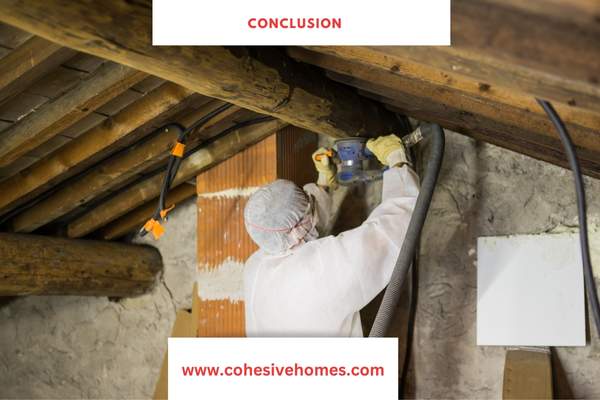
Insulating lath and plaster walls can greatly improve energy efficiency, reduce noise, and increase comfort in your home.
It’s important to consider factors such as wall type, budget, and desired insulation performance.
Safety precautions such as wearing protective gear and following manufacturer instructions must be taken.
Whether done by a professional or DIY, the results of insulating lath and plaster walls are well worth the effort.
FAQS
Why insulate lath and plaster walls?
Insulating lath and plaster walls improves energy efficiency, reduces noise, and increases comfort.
What types of insulation can you use for insulating lath and plaster walls?
Fiberglass batting, cellulose, and spray foam insulation are common for lath and plaster walls.
Is it necessary to remove plaster before insulating?
It is usually not necessary, but in some cases, it may improve insulation performance. Consult a professional for proper installation of lath and plaster wall insulation.
